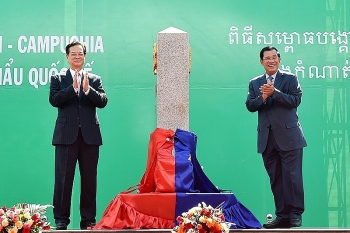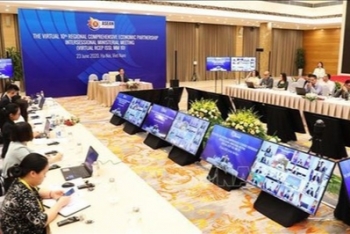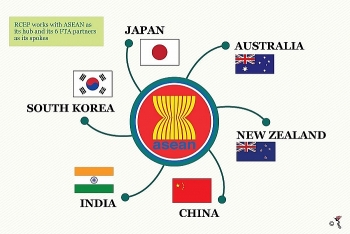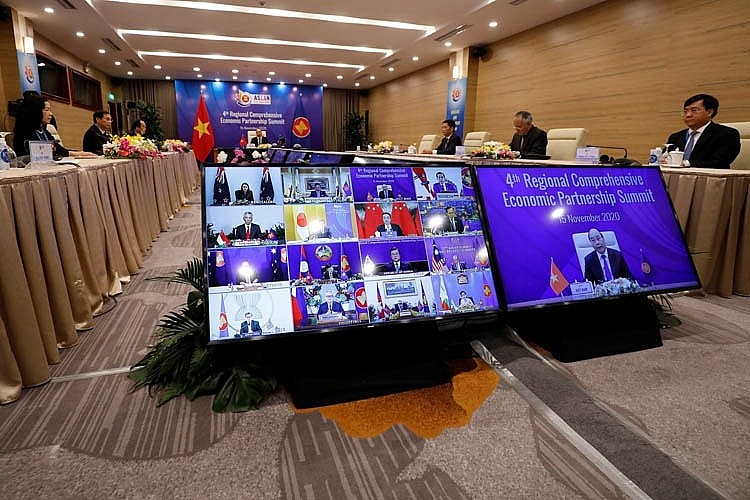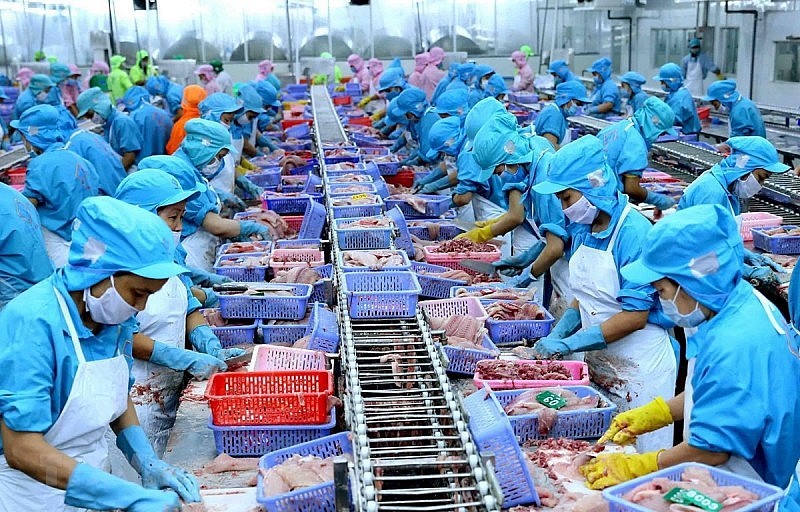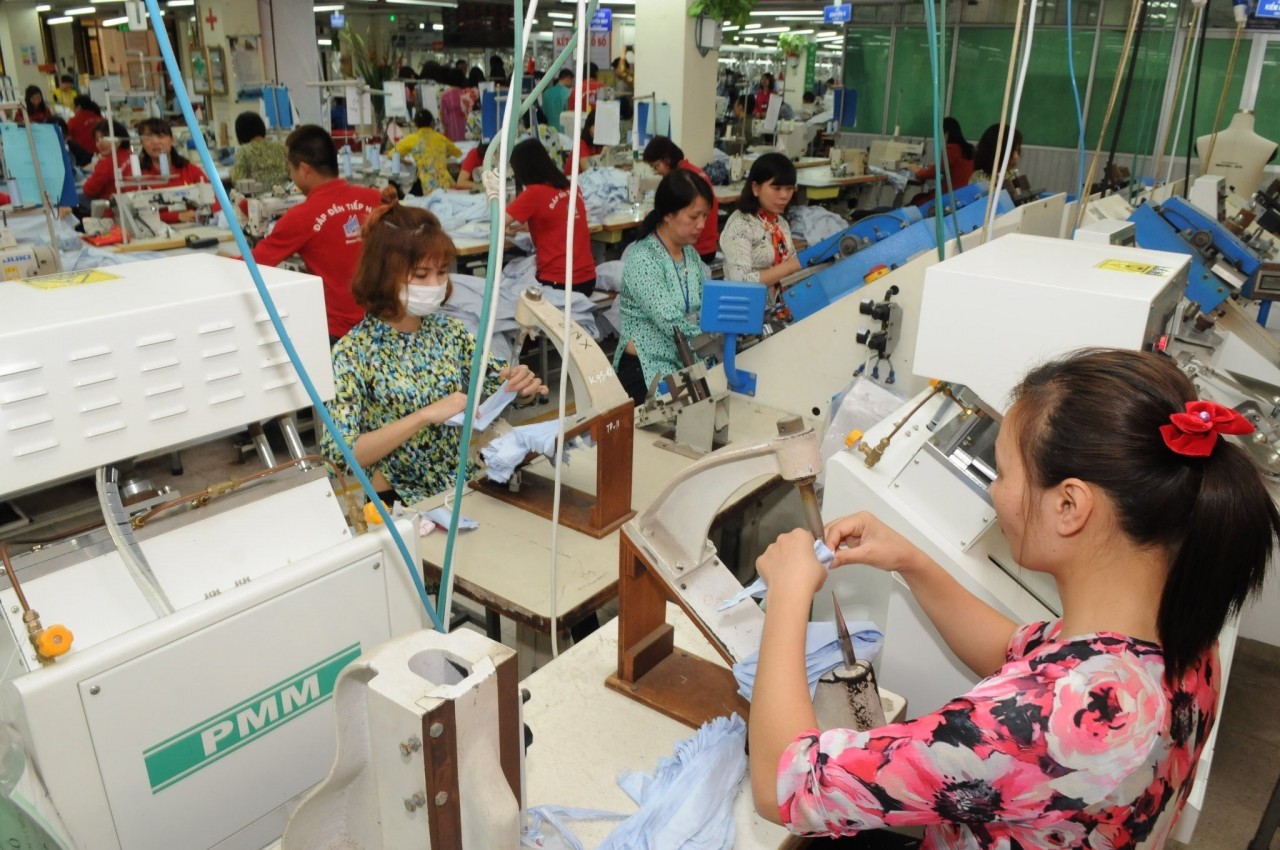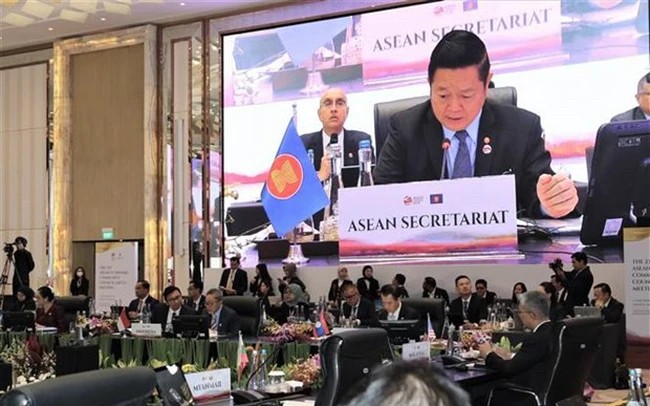How would RCEP move Vietnam's economy?
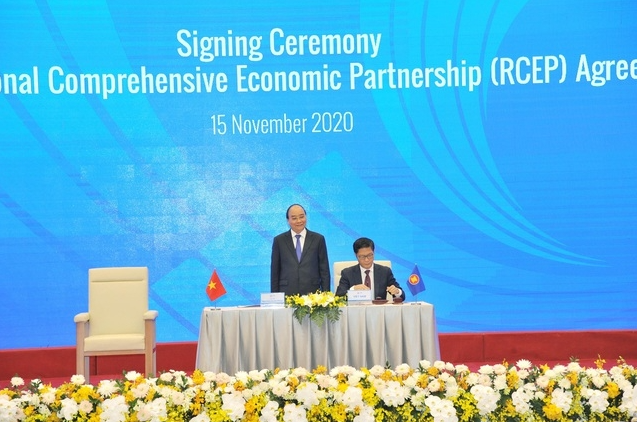 |
| The Regional Comprehensive Economic Partnership (RCEP) will create the largest free-trade region in the world of nearly $ 27,000 billion, accounting for 30% of global GDP. |
According to the Minister of Industry and Trade Tran Tuan Anh, the RCEP Agreement would bring numerous meanings and benefits for Vietnam and ASEAN, Hanoimoi reported.
The Minister affirms that RCEP forms a large-scale free economic and trade area, including 15 economies with different levels of development, and complementing economic structures. Therefore, the agreement brings a favorable opportunity for all participating countries to restructure, reposition their supply chains, and participate in value chains on a global scale.
The scale of this region is large enough that all businesses of the countries have the opportunity to calculate and rebuild their strategies to join the supply chain, which is consistent with the general global context, especially under the impact of trade protectionism, the accelerating and drastic process of supply chains reshape.
Being an open economy and the world's 25th largest exporter, Vietnam has grabbed the opportunity to reshape the economy and better exploit its new title, thereby building its position on the map of global supply chains.
The Minister adds that Vietnam has no commitments to go beyond the framework of the existing FTAs, especially those between ASEAN and partners. Therefore, businesses and consumers will not be badly affected by the competitive pressure of goods on Vietnam's domestic market.
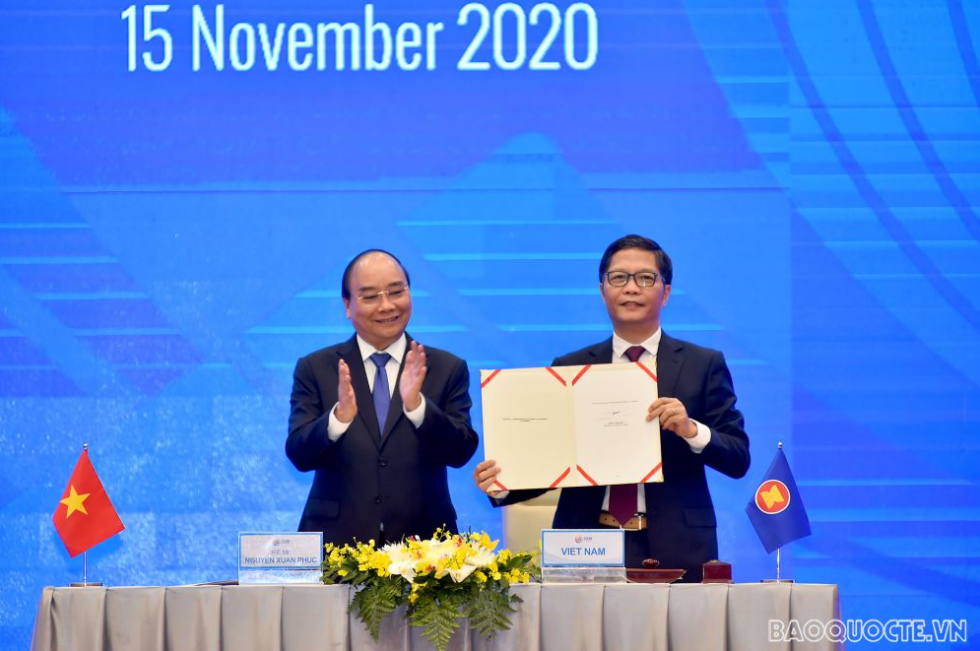 |
| This agreement brings numerous meanings and implications for Vietnam in particular and ASEAN in general. (Photo: The World and Vietnam) |
He assessed that Vietnam is fully qualified to control the situation forming by RCEP through policies relating to the reform and improvement of production capacity and competitiveness of the nation's economy, as well as of the local businesses to ensure the effectiveness of joining this agreement.
Finally, Tran Tuan Anh elaborated about three factors that form the main goals and foundation of RCEP, which are (1) continuing to create harmonization of origin procedures, (2) continuing trade facilitation and liberalization; and (3) continuing to create favorable environments to connect economies, as well as enhancing production capacity to implement the concept of building ASEAN into an integrated, united, dynamic economic region in terms of production and market.
"Those factors affirms the centrality of ASEAN and can only be implemented in the current central role of ASEAN," he emphasizes.
The Minister of Industry and Trade also affirms that Vietnam has a position and a role of great influence. Along with other FTAs, especially new-generation FTAs such as CPTPP and EVFTA, the RCEP Agreement undoubtedly promotes Vietnam's reform towards more progressive and positive directions, which then contributes to the reform and complement of Vietnam's investment and trade environment.
In addition, Tuan Anh valued that these all provide an opportune environment for the RCEP to be signed as the nations are reorganizing the supply chains and investment activities tend to change, which shows that Vietnam and ASEAN countries have the opportunity to attract foreign investment, especially from countries in the RCEP region, as well as its partners in order to improve technology and production capacity, labor quality and productivity, as well as the competitiveness of the country and the region.
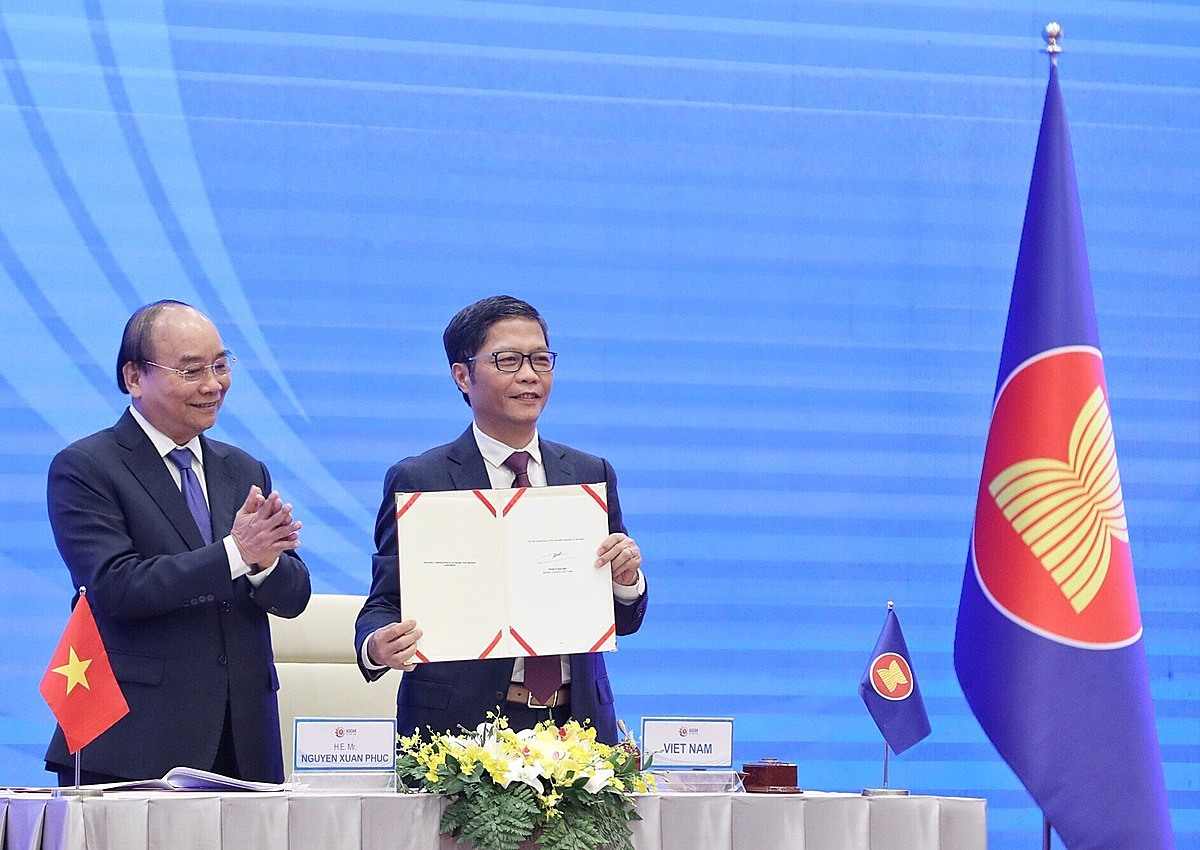 | RCEP Agreement: New opportunities, new challenges After eight years of negotiations, the Regional Comprehensive Economic Partnership (RCEP) Agreement have been signed by 10 ASEAN member countries and five partners – Japan, ... |
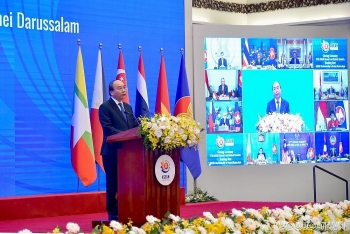 | 37th ASEAN Summit and Related Summits successfully wrap up The closing ceremony of the 37th ASEAN Summit and Related Summits took place on November 15 afternoon via teleconference. |
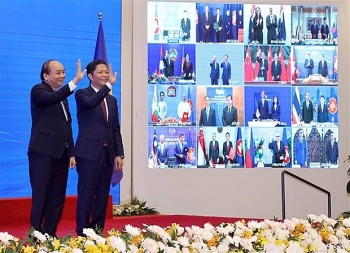 | World’s largest free trade agreement, covering 2.2 billion people signed by 15 countries The signing of the agreement will form the world’s largest free trade agreement, covering 2.2 billion people, or 30 percent of the world population, with ... |
Recommended
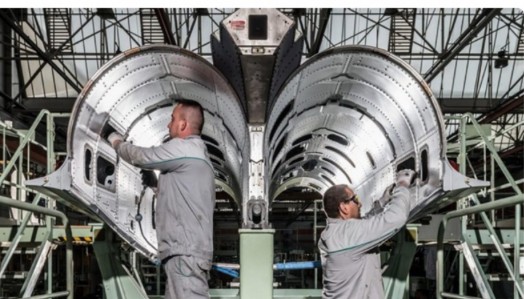 Economy
Economy

